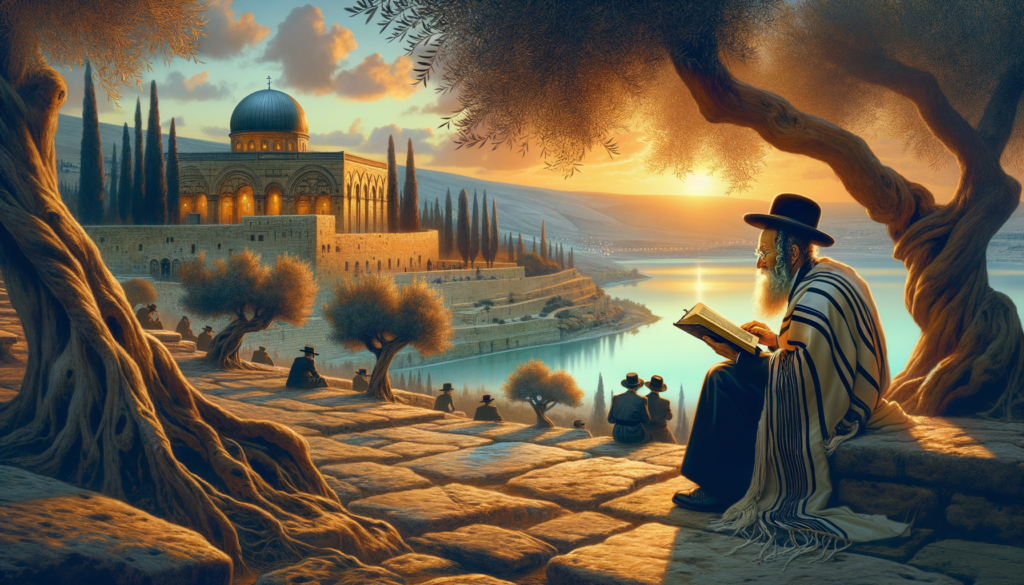The Prophet Zechariah: A Message of Hope and Restoration

The Book of Zechariah stands as one of the most intriguing and hopeful prophetic texts in the Tanakh. Its pages are filled with vivid visions, calls to action, and profound messages that resonated deeply with the people of Israel during a critical time in their history. But who was the person behind this powerful book? What is the meaning woven into his name, and what is the central message he was inspired to share? Join us as we explore the historical context, authorship, and enduring significance of the Book of Zechariah, a timeless story of rebuilding, purification, and hope for the future.
In the Hebrew tradition, names carry immense weight and often reflect the character or destiny of the individual. The name Zechariah (זְכַרְיָה) is a beautiful example of this. It is a combination of two Hebrew words: ‘Zachar’ (זָכַר), meaning ‘to remember,’ and ‘Yah’ (יָה), a shortened form of the Divine Name. Thus, the name Zechariah poignantly means ‘The Lord has remembered.’ This name was not just a label; it was a living message. For a community that had just returned from a long exile in Babylon, feeling perhaps forgotten, the prophet’s very name was a source of comfort and a powerful reminder that their heritage and covenant were indeed remembered.

To understand the book, we must first understand its setting. The prophet Zechariah began his work around 520 BCE, a pivotal moment in Israel’s history. This was during the reign of Darius the Great of Persia, just two decades after the first wave of Jewish exiles had been permitted to return to Jerusalem from Babylon. They returned to a land that was a shadow of its former self. The city was in disrepair, and most importantly, the Second Temple—the heart of their spiritual life—lay in ruins, its rebuilding stalled by hardship and discouragement. It was into this atmosphere of uncertainty that Zechariah, along with his contemporary, the prophet Haggai, emerged with a powerful message to inspire the people to complete the sacred task of rebuilding the Temple.
The question of authorship is a fascinating one. For centuries, the book has been read as the work of a single prophet. However, many historical and literary scholars have noted a distinct shift in style, tone, and historical focus between the first eight chapters and the final six (chapters 9-14). The first section is clearly dated and directly addresses the situation of the returning exiles and the rebuilding of the Temple. The latter chapters are undated and contain more universal, future-oriented visions. Because of this, it is widely suggested that the book has two parts. The first eight chapters are attributed to the prophet Zechariah himself. The author of chapters 9-14 is unknown, and this section is often thought to have been written by a later, anonymous author or authors. This does not diminish the book’s significance; rather, it shows how a prophetic tradition could be preserved and expanded over time, with each part offering a message of hope to its own generation.
At its core, the Book of Zechariah delivers a powerful, dual message. The first part (chapters 1-8) is a direct call to rebuild the physical Temple, assuring the people that this act will bring renewed blessing and prosperity. However, the prophet stresses that rebuilding walls is meaningless without rebuilding hearts. He calls for a return to justice, kindness, and faithfulness. The second part (chapters 9-14) expands this vision to a future time of universal peace and spiritual restoration, painting a picture of a renewed Jerusalem that serves as a beacon for all peoples. The ultimate message is one of profound hope: restoration is possible, both physically and spiritually.
The book is renowned for its series of eight symbolic visions, all received by Zechariah in a single night. These visions, featuring horsemen, horns, craftsmen, a measuring line, a golden lampstand with olive trees, and a flying scroll, served as powerful, metaphorical assurances to a discouraged people. They conveyed messages of divine watchfulness over the earth, the removal of guilt, and the promise that the community would be rebuilt and purified. Through this rich imagery, Zechariah communicated a sense of hope and purpose that was essential for motivating the people to look beyond their difficult circumstances and invest in a shared, brighter future. These visions remain some of the most vivid and studied passages in the prophetic literature of the Tanakh.
Explaining the Eight Visions of Zechariah
Each of the eight visions carries a symbolic meaning that reinforced Zechariah’s call to renewal: the horsemen patrolling the earth symbolize divine oversight; the horns and craftsmen show that oppressive powers will be overthrown; the measuring line represents the restoration of Jerusalem; Joshua the High Priest is cleansed, symbolizing spiritual renewal; the golden lampstand and olive trees highlight the role of a guiding Spirit in sustaining the community; the flying scroll warns against sin; and the final vision of chariots portrays sovereign control over the nations. Together, these visions painted a vivid, encouraging picture of divine presence and guidance.
The Role of Joshua the High Priest and Zerubbabel
Two important figures emerge in the Book of Zechariah: Joshua the High Priest and Zerubbabel, the governor. Joshua embodies the spiritual leadership of the people, cleansed and recommissioned in one of Zechariah’s visions. Zerubbabel, a descendant of King David, is portrayed as the civil leader tasked with rebuilding the Temple. Together, they represent the unity of spiritual and political renewal, showing that true restoration requires both divine blessing and human effort. Their presence also highlights the hopeful undertones of the book, as the imagery often hints at future leaders who will bring lasting peace.
Zechariah in Later Jewish Tradition
Zechariah’s words continued to echo through Jewish tradition. Rabbinic commentaries explored his visions in depth, often linking them to broader themes of divine justice and redemption. Liturgical readings from Zechariah are included in the synagogue calendar, particularly around festivals that celebrate restoration and renewal. In the medieval period, Jewish poets and commentators drew on Zechariah’s imagery to reinforce communal identity during times of exile. His themes of perseverance and divine remembrance ensured his continued relevance across centuries.
The Enduring Influence of Zechariah
The impact of Zechariah goes far beyond the biblical era. His visions have inspired countless works of art, from illuminated manuscripts to modern stained glass. Musicians and poets have used his themes of watchfulness, renewal, and divine remembrance as sources of creativity. In Jewish thought, his call for justice and renewal continues to resonate in prayers for the rebuilding of Jerusalem. The enduring influence of Zechariah reflects the timeless relevance of his message: that even in times of despair, hope and restoration are possible.



